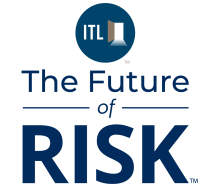The P&C insurance industry has long faced pressure to improve efficiency and reduce costs, all while navigating complex regulatory requirements and rising risks. Today, artificial intelligence (AI) is finally maturing into a tool that can help insurers meet those demands head-on. When paired with smart automation, AI is not only streamlining manual workflows but also enhancing decision-making and helping insurers accelerate and scale operations with confidence.
While much has been said about AI's promise, many insurers are still grappling with how to turn that promise into measurable results. In our work with insurers across North America and Europe, we've found that the key lies in combining AI with practical automation initiatives—and doing so with a flexible, modular approach.
AI adoption and automation remain a work in progress for many insurers. According to a recent survey on AI in insurance by Sollers Consulting, 21% of insurers are using AI to support underwriters, while another 17% are actively implementing AI for this purpose, and 31% more are planning such an initiative. Additionally, 15% of insurers are already using AI to automatically extract and analyze data for underwriters. However, only 8% have AI-driven automation in place to prepare insurance offers for underwriter verification, with 23% still evaluating such automation. These figures underscore both the opportunities and challenges insurers face in scaling AI adoption.
AI and Automation Working as One
Think of automation as the engine and AI as the GPS. Automation reduces friction by eliminating repetitive tasks, while AI adds intelligence, learning, and adaptability. When integrated, the two can transform everything from underwriting and claims to customer service and pricing.
Where automation alone might expedite a task, AI can refine it—learning from outcomes, identifying anomalies, and making predictive recommendations that add strategic value. This symbiosis is especially valuable in P&C insurance, where decisions are complex and data is abundant but often underused.
In underwriting, modular deployment of AI-enabled underwriting workbenches is streamlining submission intake, data gathering, and risk assessment—giving underwriters a unified view of risk without disrupting core systems.
Because underwriting processes often struggle with fragmented data and legacy system constraints, AI initiatives here focus heavily on data ingestion, standardization, and decision support, while AI in claims focuses more on triage, fraud detection, and automation.
Key Processes to Target for AI Automation
While every insurer's roadmap is unique, our experience suggests there are seven high-impact areas where AI-enabled automation is delivering immediate returns.
1. Claims Processing Automation: AI significantly speeds up the First Notice of Loss (FNOL) process by analyzing text, photos, and videos submitted by policyholders. It can extract relevant details, assess severity, and initiate workflows—all in real time. This not only accelerates settlements but also improves policyholder satisfaction.
2. Fraud Detection: Traditional rule-based fraud detection often falls short of identifying new or subtle threats. Machine learning models continuously adapt to evolving fraud patterns, flagging anomalies in claims documentation, invoices, and even claimant behavior. These systems reduce false positives and allow fraud teams to focus on high-risk cases.
3. Underwriting Efficiency: AI empowers underwriters by synthesizing large datasets, from historical claims to third-party data, into actionable risk insights. By pre-analyzing submissions, AI reduces the time spent on each file and improves risk selection. It also supports faster onboarding of less-experienced underwriters through decision support.
4. Risk Scoring and Modeling: AI enhances the precision of risk models by factoring in dynamic data such as weather, building materials, location, and behavior. These continuously learning models support both underwriting and pricing, making it easier to tailor coverage and reduce exposure.
5. Pricing Optimization: Predictive analytics enable insurers to fine-tune pricing based on a deeper understanding of risk, market conditions, and customer behavior. AI-driven models can simulate scenarios and identify price sensitivities, allowing insurers to balance competitiveness with profitability.
6. Policy Administration Automation: From issuing policies to handling endorsements and renewals, AI streamlines core administrative tasks. Robotic Process Automation (RPA) tools, combined with AI-based decisioning, can validate inputs, detect errors, and execute changes, reducing back-office burden and turnaround time.
7. Document Handling and Extraction: AI-powered natural language processing (NLP) can parse complex documents, such as medical reports or police statements, extracting structured data from unstructured content. This accelerates workflows in both underwriting and claims and minimizes human error.
Strategic Implementation Without Disruption
One of the most common misconceptions about AI is that its deployment requires a complete overhaul of existing systems. In reality, many AI use cases can be implemented modularly, with minimal disruption. For example, insurers can start by embedding document analysis tools into claims or underwriting systems, or launching a chatbot to handle common customer queries.
These "low-hanging fruit" projects offer a fast return on investment and build internal confidence in AI's value. Once successful, they can be scaled or integrated with more advanced systems over time.
In underwriting, early AI wins often come from automating submission intake or augmenting risk assessments, building momentum for broader transformation over time.
To ensure AI tools function as intended, insurers must also invest in the fundamentals:
Data Management: Clean, consistent, and governed data is essential for training and operating AI models. A unified data strategy can unlock insights across the organization.
Flexible IT Architecture: Insurers should prepare for integration by building modular architectures that can support APIs, data pipelines, and AI engines without management strategy that ensures a smoother transition and better adoption across teams.
Business Process Optimization: AI works best when it enhances already-sound processes. A workflow review can identify the best points for automation.
Evolution, Not Revolution
Technology alone can't transform an organization. To realize AI's full potential, insurers must engage, empower, and evolve their teams. This means offering training, clarifying roles, and positioning AI as a partner—not a replacement—for skilled professionals.
AI-driven automation isn't a single event—it's a continuing journey. The most successful insurers are those that take a phased approach: starting small, proving value, and then scaling solutions that work. With the right mindset and execution, AI can transform core operations, improve agility, and unlock long-term value.









